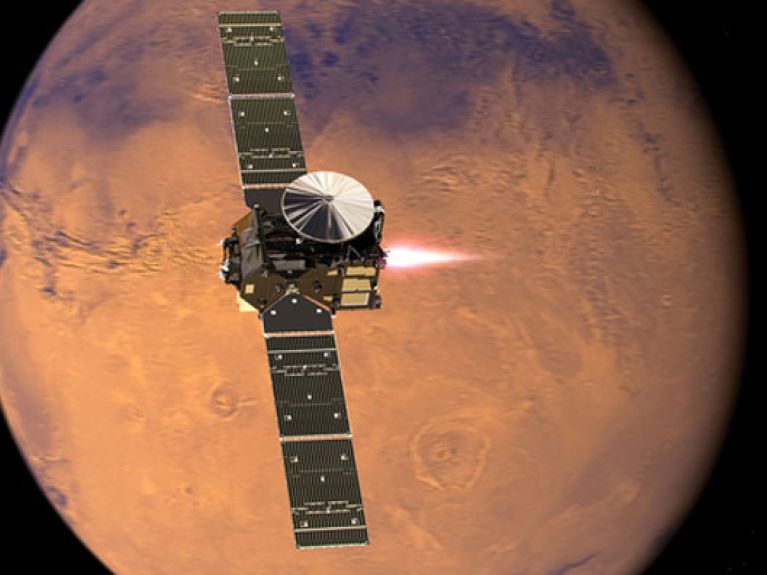ExoMars en route to the Red Planet
For its ExoMars mission, the European Space Agency (ESA) has teamed up with Russian colleagues in its search for life on Mars.

What sort of wheels does a vehicle need to be able to drive around on the dusty surface of Mars? This is a question Lutz Richter has been focusing on for quite some time. A German aerospace engineer employed by the space company OHB System AG, Richter has been working for more than ten years on the “ExoMars” project along with many other scientists in Europe. With Russia on board as a partner, the European Space Agency (ESA) now hopes at last to achieve what the USA already succeeded in doing back in 1976: to land on Mars and search for life on the Red Planet.
On Mars in October
The first part of the mission, which involved a Russian Proton rocket putting the ExoMars probe into Mars’ orbit, already took place on 14 March 2016 in Baikonur, in the heart of the Kazakh Steppe – which was also where Yuri Gagarin was the first human to be launched into space in 1961. “Preparing the first ExoMars mission involved a great deal of hard work, but thanks to the tireless efforts of our international team a new age of Mars exploration has come within striking distance”, commented ESA Director General Johann-Dietrich Wörner.
ExoMars is scheduled to reach the Red Planet in October 2016. It will then split, the main probe remaining in the planet’s orbit. The small landing module, which is named “Schiaparelli”, will explore the surface of Mars and gather measurement data about its atmosphere, temperature and climate. It is hoped that the results will provide answers to the mission’s most important question: is there or has there ever been life on Mars? Furthermore, a specially-developed camera is to supply images – in colour and in high resolution – of Mars and its topography.

